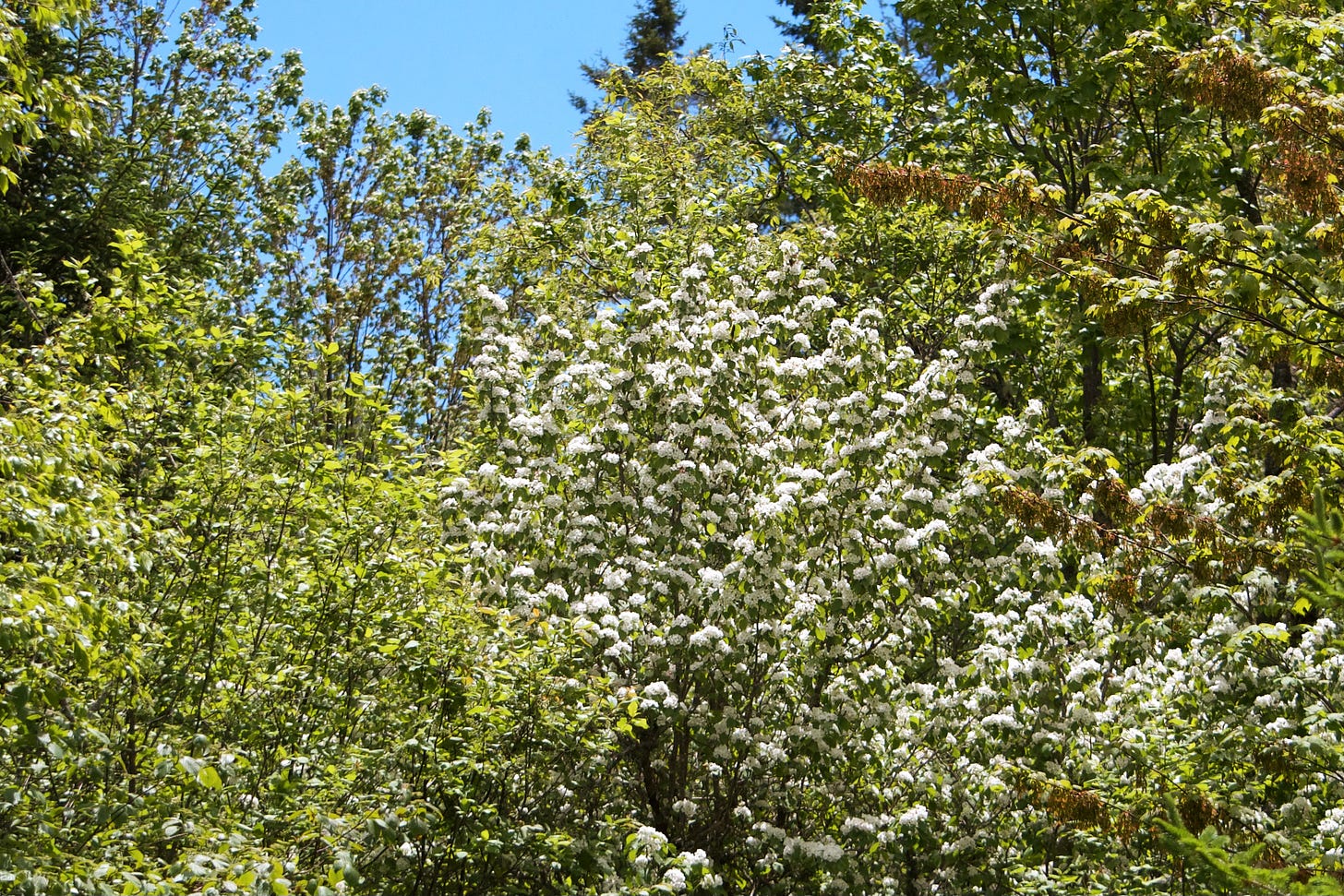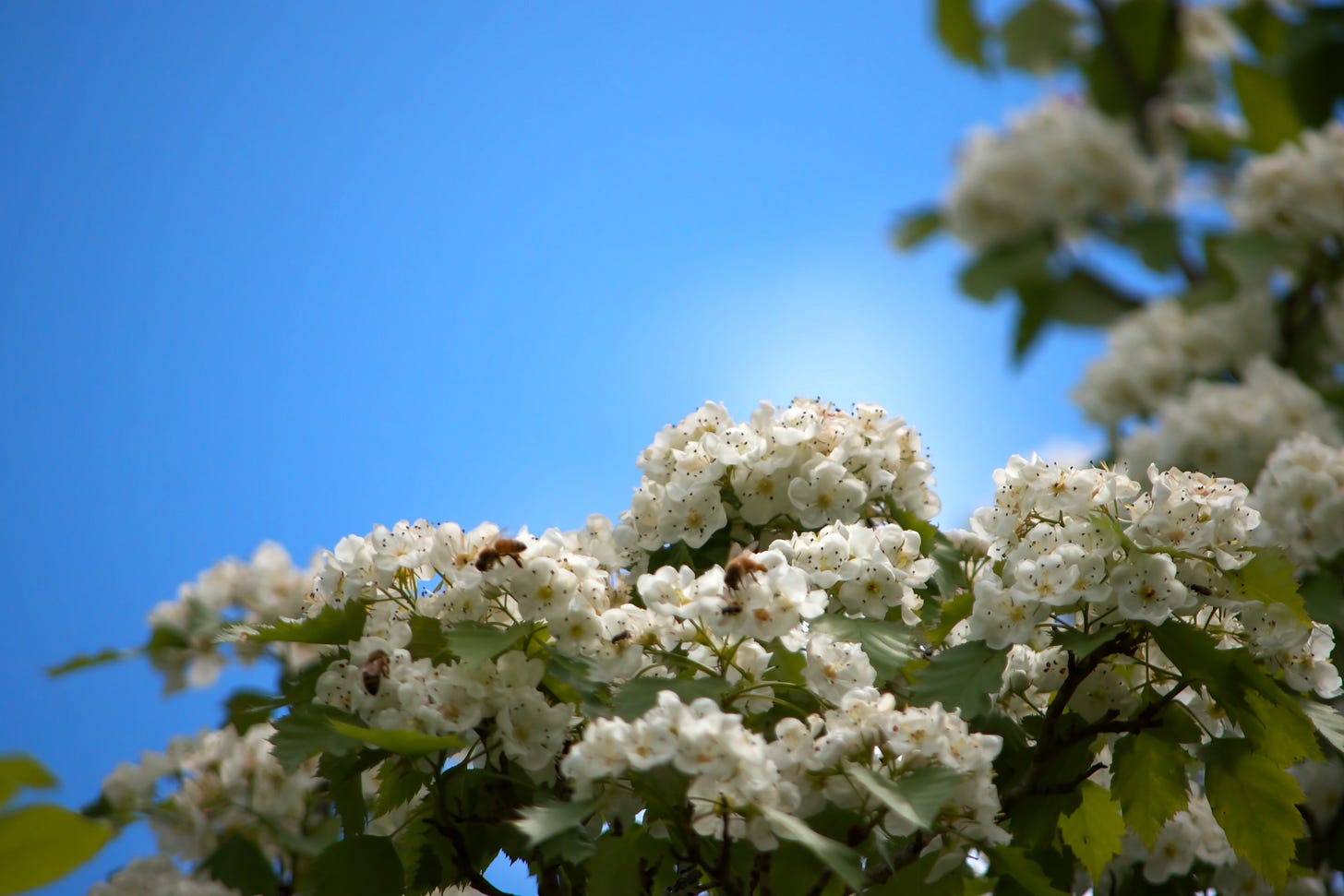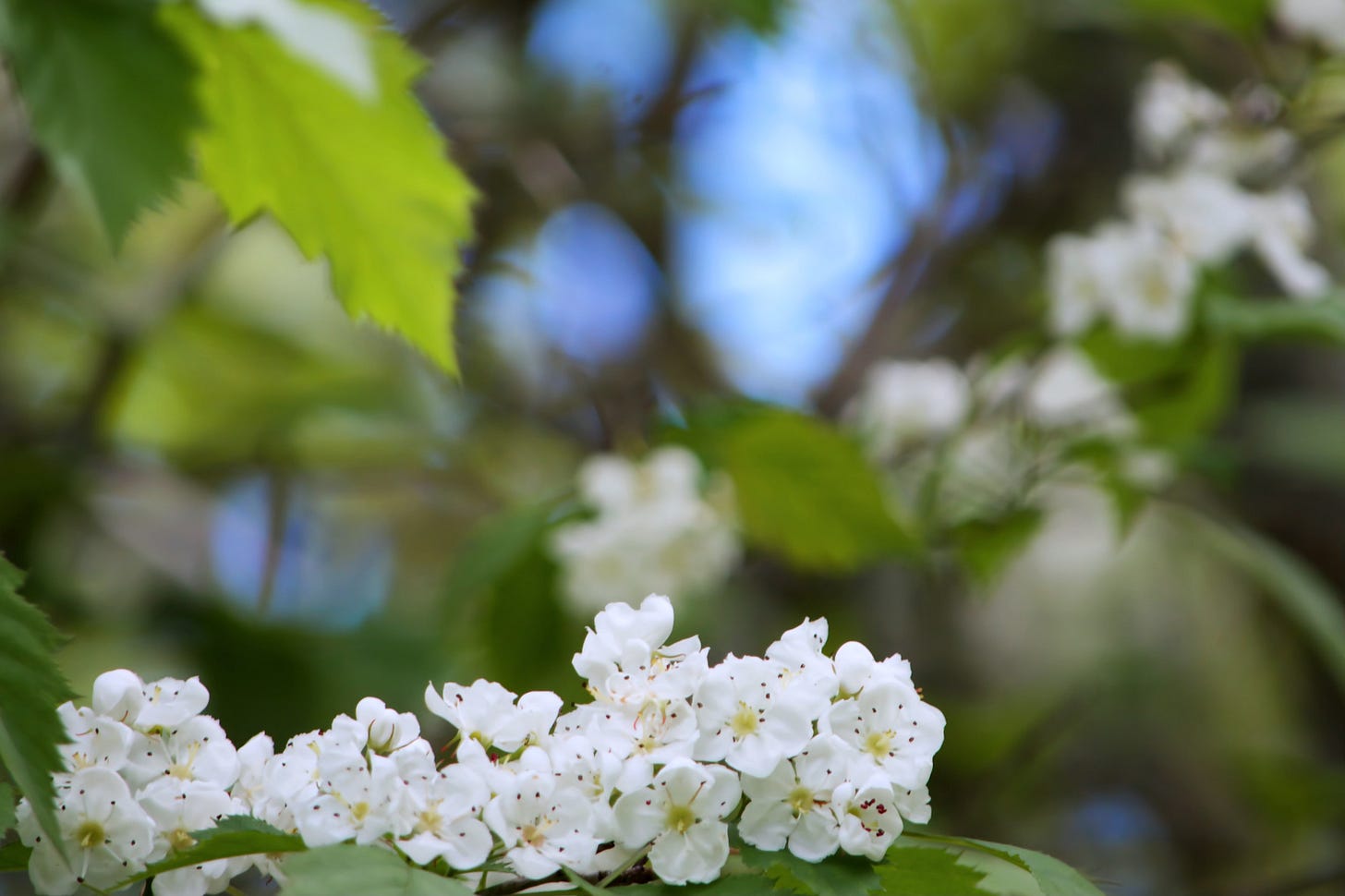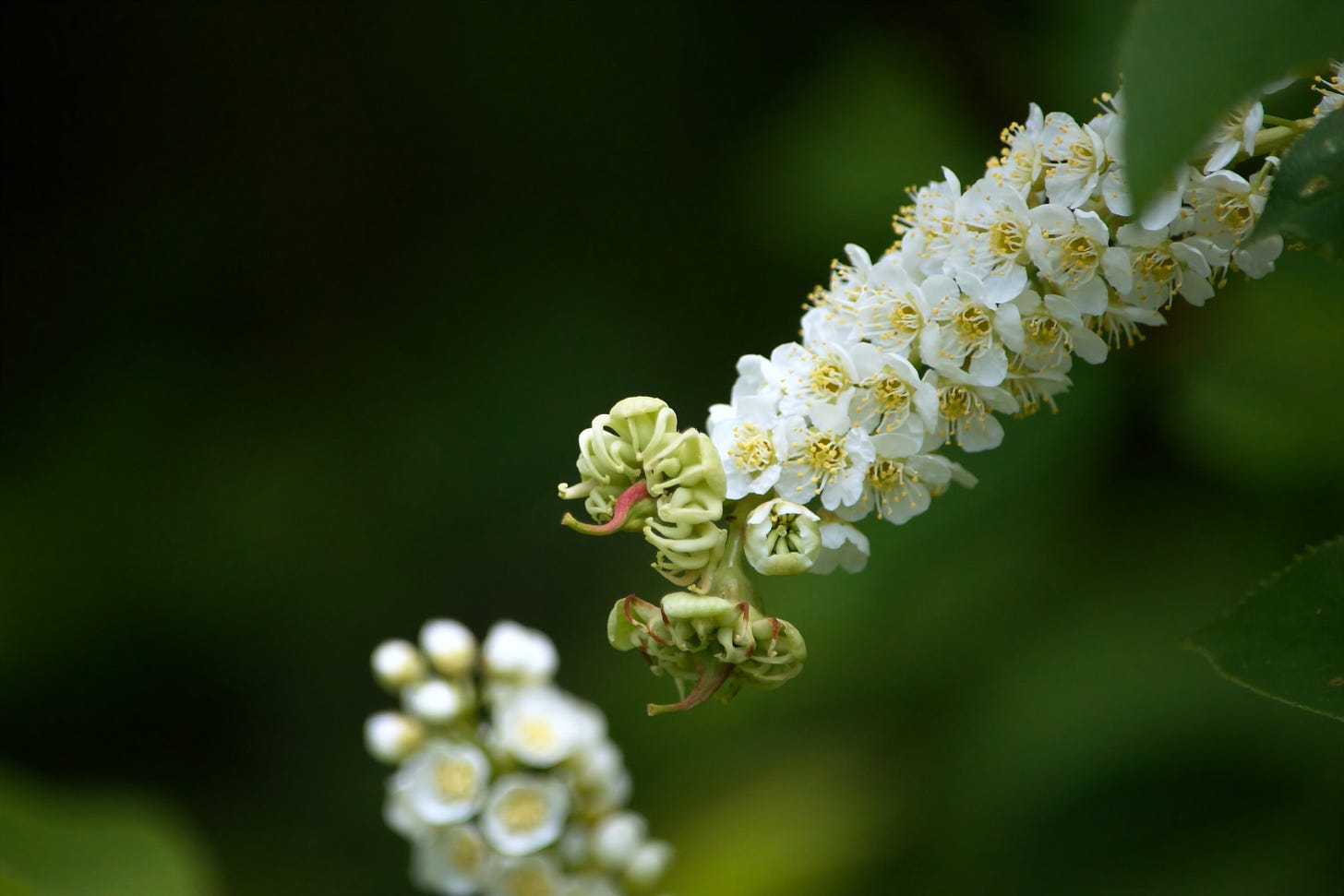Spotlight On: Trees!
Because the forest is always casually hanging out in the background - but sometimes it deserves to be the main event.
Thank you for supporting Nature Moments! We are making the world a better place, one nature connection at a time - be curious, be amazed, and then do it again! 💚
Trees are so constantly around that they can begin to fade into the background. But they’re actually so incredible, and so individual, that it’s worth taking a moment to put them in the spotlight!
This time of year, there is sooooo much happening amongst sooooo many trees. Leafing out, blooming, preparing for a busy season of hosting wildlife and deepening roots and broadening canopies, competing and interconnecting and weaving our pasts into our futures.
If you ever want to have your mind blown, chase the rabbit down the hole of how trees communicate, with each other and with all of the other various co-habitants of their forest kingdom. The more we learn, the more there is to be amazed by.
When we first moved onto our property, we had to cut down a spruce tree that had grown into our power line. It was a rare glimpse into the new growth basking in the sunny glow at the lofty heights of a towering spruce tree.
But also, within moments of tipping that tree, the air was filled with a cloud of Spruce Sawyer Beetles, called from all points by the invisible final distress signals of this majestic tree. It was a beautiful tribute, and a sobering reminder of the far-reaching ripples of our actions when we make our mark on the woods.
I soon learned that spruces make especially great neighbors, because Spruce Tip Tea is incredibly delicious and packed with Vitamin C! (So important during those ancient scurvy-ridden times 🤣)
Spruce Tip Tea
1/4 cup spruce tips
per 8 ounces boiling water
steep for 10 - 15 minutes
sweeten to taste
Just keep in mind as you forage that each tip you pluck is that entire year’s growth, so choose tips as though you were pruning, leaving the growth you want to encourage and harvesting where you want to cut back.
Even in a patch of forest that is quite small, and quite familiar, it is still possible to meet brand new trees that you never even realized were there. Earlier this spring, I discovered a Pussy Willow that had somehow managed to escape my notice for years in a mixed forest that I was certain only contained Black Willows. Surprise!
So I Met a Tree
When nature helps you see the forest for one new tree...
The forest lives a whole life beyond our notice! We will never know all its secrets, and so there will always be surprises waiting for us.
And only a few short weeks later, I was surprised AGAIN, by a brand-new-to-me hawthorn variety that I had no idea was slowly preparing to spring onto the stage of my awareness.
According to Maine.gov, there are 22 hawthorn species found in the state. Our familiar hawthorn is a gracefully airy variety that grows beneath the wild apple trees, dotting the dappled understory with these elegant little floral sculptures, creamy white with rosy stamens.
The branches are long, willowy, and sparse, snaking their way amongst the dapples to gather every possible spot of light. They’re one of my (many) favorite understory trees, and I look forward to their new leaves and blossoms every single year. But little did I know…
Just across the driveway, just around a curve that I walk around nearly every single day, this beauty had burst into sudden full-bloom. No modest tracings of whisper-boughs through the understory for this hawthorn, instead boldly holding court right alongside the maples and the apples and the wild cherries!
A completely round canopy, full and stout and densely packed, a new take on a familiar favorite.
It’s an incredible specimen. I stood beneath the arching boughs, just overflowing with blossom garlands, and listened to the steady hum of hundreds of bees visiting thousands of flowers, amazed by a hawthorn that had burst out of the supporting cast to demand main character respect in this brimming patch of mixed forest.
These trees, they’re just such divas sometimes!
Take the Eastern White Pine, for instance. Most evergreens put out a new year’s growth in the same manner as the spruce tips, little spring-green bundles that expand the branches year-by-year. But the Eastern White Pine is a monarch of the forest and heralds the arrival of the season’s growth with golden candles at the tip of every branch!
Or the Serviceberry, which is not content to leave fall colors to fall, but instead highlights each year’s new growth with red and gold jewel, just at the tip of every branch, just to bring that little-extra-something to spring fabulousness.
As with all divas, there’s always the air of mystery. This is a Chokecherry, an extremely common shrubby tree that is one of the first to fill in any given clearing. Slender trunks stream up into a fountain of foliage with white flower spikes that ripen into clusters of deep red berries. They are favorites among the birds, and after sun-drying or roasting and grinding, have a delicious cherry-almond flavor that has earned them a place among teas and cakes since native times.
But what is happening at the tips of just a very select few of these blossom spikes? The dramatic green blossom-sculptures with pink tongues, where a simple white cluster-flower should be? I. Have. No. Idea. After much internet-sleuthing, exhausting all of my ideas for different search string variations, I still haven’t been able to figure it out. When a blossom does something new and unexpected, it’s typically the result of some other wild influence acting upon it. Viruses and fungi can cause unusual growth patterns. Parasitizing insects can interact with plant DNA to produce galls to shelter their future generations. But what’s going on here? I still don’t know, I just can’t find any reference to this particular abnormality. 🤷🏼♀️
The thing is, no matter how well you get to know her, nature will always leave you with one more mystery just to remind you that there will always be more to learn. Because nature is definitely a beautiful background - but she knows very well that she is also the main event!















Thank you for the beautiful pictures and spruce tips recipe! Oregon is full of Douglas fir trees, in early spring the tips come out. If I’m thirsty while walking Honey I pick a tip they are hydrating. Also can make hydrating water by placing a handful in a jar of water overnight.
Thanks for these beautiful pics! I'll be looking at the trees in my life more closely now, Sydney. You've heightened my awareness.